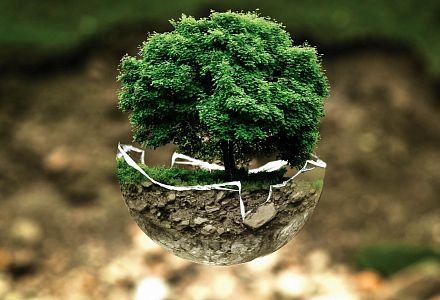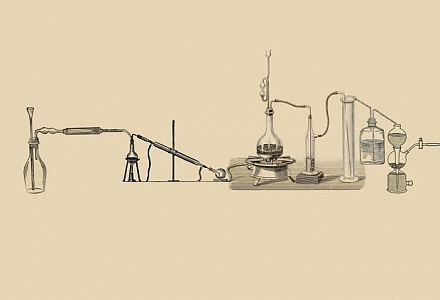Where is the best place to grow cannabis plants? Indoors or in nature? This question is actually not that easy to answer, because there are hundreds of factors on which a successful harvest depends. We have compiled the most important factors and summarised the many advantages and disadvantages of each form of cultivation for you! Well then, let's get started.
Cultivating hemp: the basics
While private hemp cultivation is still being prosecuted as an illegal offence in Germany, the situation is quite different in the United States and other countries around the world. How the regulations in this country will develop within the next few months is still written in the stars. The legalisation of the hemp plant is already in the starting blocks on the part of the government, but this does not mean that the cultivation of cannabis on one's own will be allowed. Nevertheless, the cultivation of cannabis is an exciting topic that can take up entire websites and books. So what to look out for and whether it is better to grow indoors or outdoors, you can find out right here.
The diverse demands of growing cannabis
To make your cannabis plants thrive at their best, you need some basic knowledge about the elementary parameters to consider when growing cannabis. The first important factor in growing cannabis is light. For the plant to grow quickly and steadily, it needs more than 12 hours of light in a day. This can be regulated indoors, for example, with the help of a timer. Outdoors, too, plants need a minimum of 12 hours of daylight - and at least eight hours of direct sunlight.
The choice of soil is also essential for successful hemp cultivation. Here, you should find out in advance exactly which soil is best suited for which hemp variety. The exciting thing about the hemp plant, however, is that the soil can also be replaced by other neutral materials such as coconut fibre, perlite, vermiculite or rock wool. You may also have heard of aeroponics. This is hydroponics, where the roots of the plant thrive in water enriched with nutrients.
The third important factor to consider when growing cannabis is circulating air. The cannabis plant needs a constant exchange of gas to grow healthily. Outdoors, the plant is relatively robust. Even strong winds can hardly harm it. Indoors, on the other hand, air circulation, fresh air supply and exhaust air must be actively provided. Why is this so important? Quite simply, stagnant air favours the infestation of pests and mould. Without any air circulation, aspirated gases also often accumulate, which can reduce the growth of the plant. In addition to air circulation, attention must also be paid to the prevailing humidity. Outdoors, of course, you don't have much influence on this. Indoors, on the other hand, care should always be taken to maintain a balanced humidity level in order to keep pests at bay and prevent mould.
Like all other plants, the cannabis plant needs sufficient water. In an area where there is regular rainfall, the hemp plant is well provided for outdoors. Indoors, it must be actively provided. Here, above all, the pH value of the water plays an important role.
Another key parameter is the temperature. Actually, the plant is very robust when it comes to temperature fluctuations. Nevertheless, weather extremes can take quite a toll on them. They stop growing, and in the worst case they can even freeze or burn to death. The generally known ideal for vigorous cannabis growth is 27 degrees Celsius. Indoors, it is not particularly difficult to create the optimal ambient temperature due to heaters, air conditioners and lamps. In outdoor cultivation, you have to follow the climate. With the help of apps, you can see the sun cycle, for example, and thus ensure that you get the right timing for cultivation.
The differences between both growing methods
As already indicated, there are two different ways to grow cannabis: indoors and outdoors. But which is the better place to grow cannabis? Unfortunately, there is no one right answer to this question, because there are different things to consider depending on which location you choose to grow your plants. So depending on what your preferences are and what your starting situation is, you can decide to grow cannabis indoors or outdoors. Before deciding on a growing location, you should first consider all the variables needed for successful growth.
Outdoor cannabis cultivation
What are the reasons for growing cannabis plants outdoors? Well, first and foremost, there is the fact that the plant has been growing and thriving outdoors for more than 12,000 years, and that it is also constantly reproducing. Of course, much also depends on the specific environmental conditions; the term "outdoors" is, after all, very vague. In the following chapter you will learn about the concrete advantages and disadvantages of outdoor cultivation.
Cultivating cannabis indoors
In contrast to the outdoor area, indoor cultivation offers control, protection and discretion. On the other hand, the space for the growing plants is very limited, which is of course not an optimal condition for the plant. What other advantages and disadvantages indoor cultivation has, you will now learn in the following chapter.
Indoor vs. outdoor growing: Pro & cons
Which form of cultivation gives you the better harvest? Which form of cultivation is the cheaper option? Now you can find out the most important advantages and disadvantages of both cultivation methods.
The cannabis harvest: comparing yield, quality, intensity & appearance
A compelling advantage of indoor growing is definitely the control you have over your cannabis plants. The lighting, the temperature, the nutrient supply, the humidity - all this can be controlled indoors and adjusted if necessary. You are also more flexible when it comes to growing, as you don't have to wait for the ideal climatic conditions, but simply create them yourself. In addition, the plants are more protected indoors. Of course, strong storms or too much precipitation cannot harm plants indoors. On the other hand, the indoor area is very stable, especially with regard to soil life. Microbial life, however, is indispensable for a high-quality crop. Therefore, attempts are often made to imitate nature in this respect. Thus, worms, certain types of fungi and beneficial bacteria are intentionally added to the soil. Another disadvantage of indoor cultivation is the light. The lamps used for the plants do serve their purpose, but they lack something very crucial: UV radiation, which actually serves as a self-protective agent for the plants. But which cultivation method now gives me the highest quality cannabis? We have good news: both indoor and outdoor growers produce excellent harvests every year. The many parameters and variables that need to be taken into account when growing cannabis make it impossible to say that one option clearly outweighs the other. In the end, it all comes down to personal preference and the individual's starting point.
But what about probably the most important criterion for cannabis fans: the intensity? Because of the controlled environment, it was always assumed that it would be easier to grow a higher potency indoors. In practice, however, one repeatedly gets opposite results, because the cannabis plants that were grown outdoors usually have more terpenes and cannabinoids. So it seems that cannabis develops its greatest potential in perfect environmental conditions outdoors. The kicker, however, is that perfect conditions can hardly be guaranteed in outdoor cultivation. Indoor cultivation seems to be the safe bet with the stable environment, but will usually not reach the potential that can be achieved outdoors.
Can you tell if cannabis plants have been grown indoors or outdoors by their appearance? Yes! Cannabis grown outdoors may appear slightly paler due to the sunlight. However, this is not necessarily an indication of poor quality. In addition, the plants and flowers are usually significantly larger outdoors. This is mainly due to the space that the plants have outdoors to spread out and also due to the sunlight.
The costs of growing outdoor vs. indoor
Indoor cultivation is usually the more expensive variant of hemp cultivation. Especially at the beginning there are high costs because, as you know by now, you need a lot of technical equipment like lamps, heaters, air conditioners, humidifiers or activated carbon filters to create the optimal growing conditions. The electricity and water bills will also remain relatively high due to the artificially created environmental conditions. However, all the investments also have something good: they usually guarantee excellent results that can quickly recoup the expenditure.
The environmental impact of both cultivation methods
In outdoor cultivation, the cannabis plant can have a positive impact on the environment. The plant has the ability to absorb CO2 from the atmosphere and convert it into oxygen with the help of water and sunlight. Some studies have already shown that hemp fields can bind between eight and 15 tonnes of CO2 per hectare - forests of the same size can only bind two to six tonnes of carbon dioxide. Unfortunately, things don't look so good for indoor cultivation. A major disadvantage of indoor cultivation is the high consumption of large amounts of energy. After all, light, water and air have to be added artificially in this cultivation method. The artificial light, which shines up to 24 hours a day, is on average 50-200 times more intense than in a classic office building. In addition, indoor cultivation emits a lot of carbon dioxide. In a study of production facilities in Colorado, it was calculated that about 2.3 to 5.2 tons are emitted per kilogram of dried cannabis flowers. Indoor cultivation is therefore responsible for a high emission of greenhouse gases and thus not particularly environmentally friendly.
Hybrid (greenhouse) farming: a win-win game?
Why worry about which is the best way to grow cannabis when you can have the best of both worlds? Greenhouses, for example, serve as an ideal hybrid approach. The cannabis plants cultivated are offered protection and control on the one hand - as in indoor cultivation - and at the same time can enjoy the benefits of natural sunlight when conditions permit. Energy can be saved in this way when environmental conditions allow.




